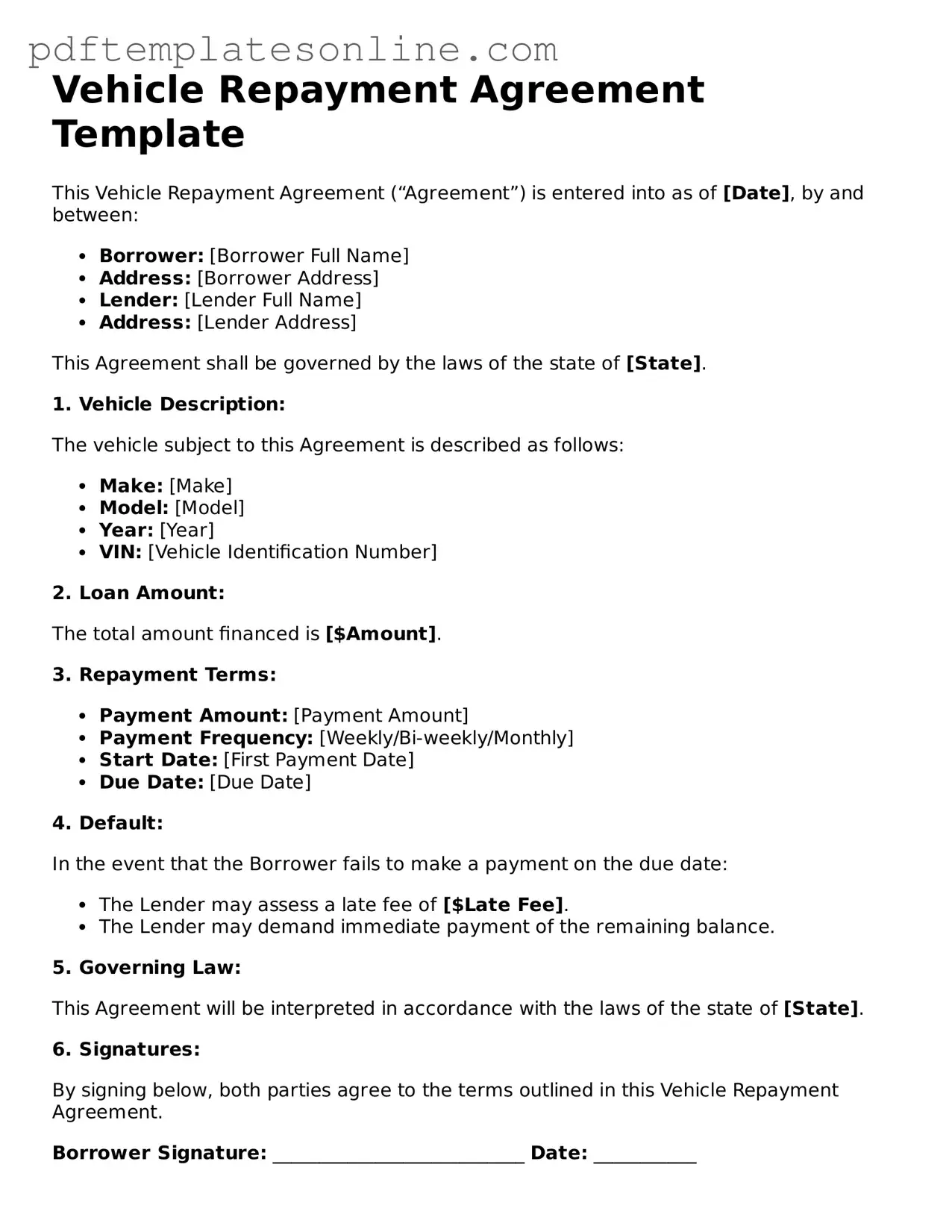Fillable Vehicle Repayment Agreement Document
The Vehicle Repayment Agreement form is a crucial document that outlines the terms under which a borrower agrees to repay a loan secured by a vehicle. This agreement typically includes details such as the loan amount, interest rate, payment schedule, and consequences for default. Understanding this form is essential for both lenders and borrowers to ensure a clear and fair repayment process.
Access Vehicle Repayment Agreement Editor Now
